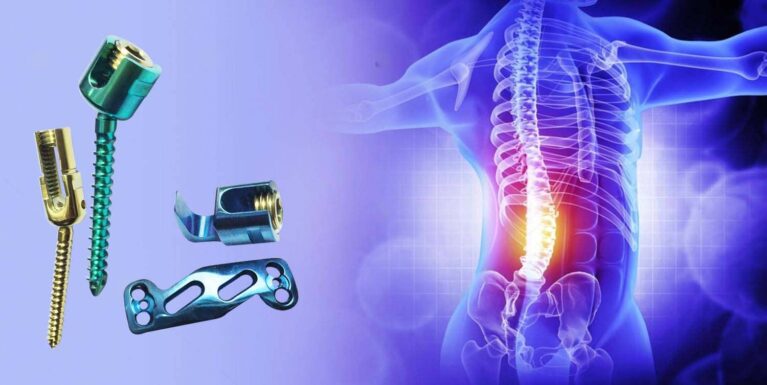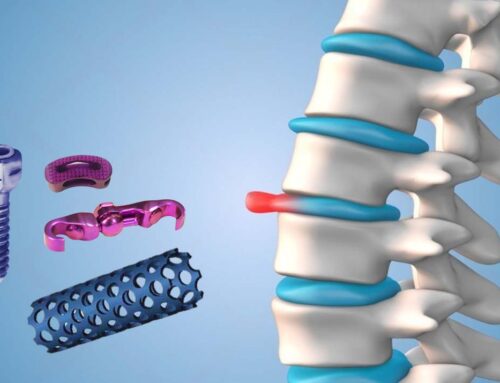Spine implants are medical devices used in spinal surgery to treat various spinal disorders and conditions. These implants help stabilize and support the spine, facilitate fusion of spinal segments, and alleviate pain caused by spine problems. Spine implants can be used in procedures such as spinal fusion, decompression, and correction of deformities. Here are some common types of spine implants and their purposes:
Types of Spine Implants
Pedicle Screws:
These are screws that are inserted into the vertebrae to provide anchorage points for rods or plates. They are commonly used in spinal fusion surgeries to stabilize the spine while the bones fuse together.
Rods:
Rods are long, slender devices that are attached to pedicle screws or other anchors to maintain the alignment of the spine and provide stability. They can be contoured to match the natural curvature of the spine.
Plates:
Plates are flat devices that are attached to the vertebrae with screws. They are often used in the cervical spine (neck) to stabilize the spine after decompression or fusion surgery.
Interbody Cages:
These are devices placed between the vertebrae in the intervertebral space after the removal of a damaged disc. They help maintain the space and promote bone fusion. Cages can be made of materials like titanium, PEEK (polyetheretherketone), or bone graft.
Artificial Discs:
Also known as disc replacements, these devices are used to replace a damaged intervertebral disc while preserving motion at that segment of the spine. They are an alternative to spinal fusion for some patients.
Hooks:
Hooks can be attached to the vertebrae or other parts of the spine and are often used in conjunction with rods to correct spinal deformities such as scoliosis.
Wires and Cables:
These are used to provide additional support and stabilization, especially in complex spinal surgeries or when other implants are not suitable.
Cross-Linking Devices:
These are used to connect rods on either side of the spine to provide additional stability and rigidity to the spinal construct.
Purposes of Spine Implants
Stabilization:
Spine implants provide stability to the spinal column, especially after decompression surgeries where part of the bone or disc is removed to relieve pressure on the spinal cord or nerves.
Facilitation of Spinal Fusion:
In spinal fusion surgeries, implants help hold the vertebrae together to promote bone growth and fusion. This is often necessary to treat conditions like degenerative disc disease, spondylolisthesis, and spinal fractures.
Correction of Deformities:
Spine implants are used to correct and stabilize spinal deformities such as scoliosis, kyphosis, and lordosis. They help maintain the spine in proper alignment.
Pain Relief:
By stabilizing the spine and relieving pressure on nerves, spine implants can significantly reduce pain and improve the patient’s quality of life.
Restoration of Function:
By addressing spinal instability and deformities, implants help restore normal function and mobility to the patient.
Materials Used in Spine Implants
Titanium: Lightweight, strong, and biocompatible, making it a common choice for many spinal implants.
Stainless Steel: Strong and durable, though less commonly used today compared to titanium.
PEEK (Polyetheretherketone): A type of plastic that is radiolucent (does not interfere with imaging studies) and has mechanical properties similar to bone.
Bone Grafts: Often used in conjunction with other implants to promote bone fusion.
The choice of spine implant and surgical technique depends on various factors, including the specific condition being treated, the patient’s overall health, and the surgeon’s expertise.




Leave A Comment